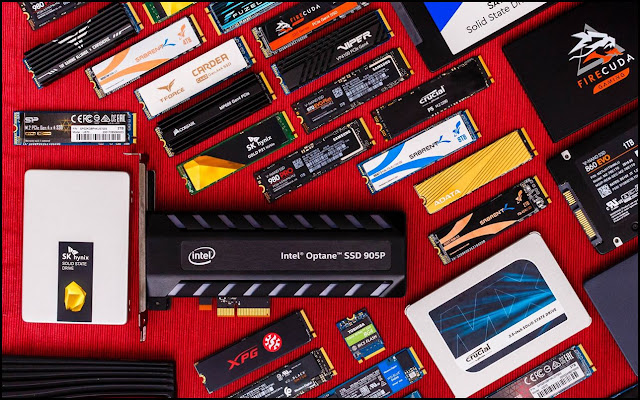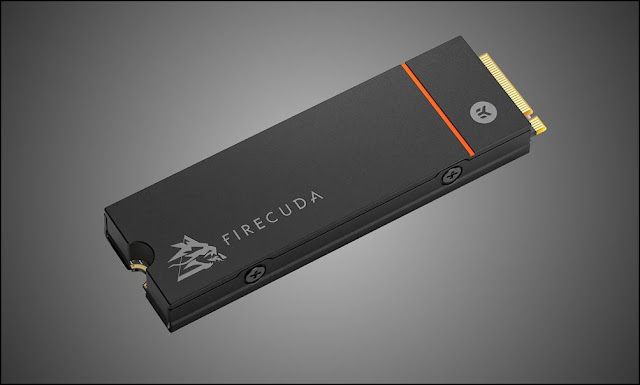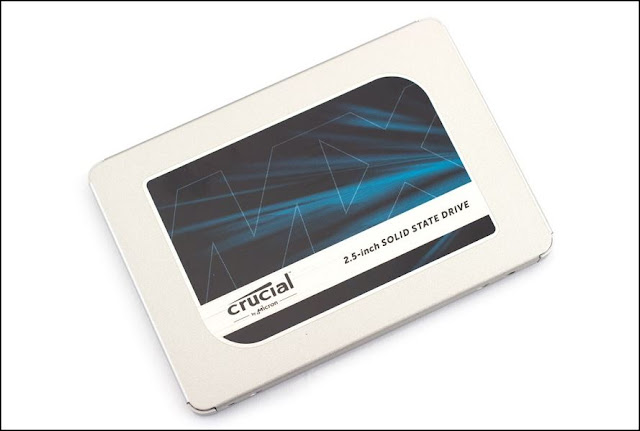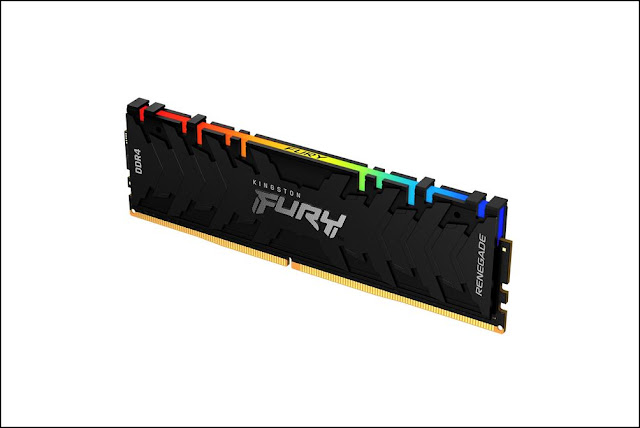Not only do the best SSDs for gaming ensure that your games load as rapidly as possible, but they also make Windows run more smoothly. Right now, you don't need the fastest SSD on the market, but Microsoft is set to deprecate the DirectStorage API soon, which means games will be able to take use of the faster transfer rates to provide larger, more complex worlds.
The performance gap between an SSD and a traditional hard drive is enormous, and the same can be said for SATA drives and the finest PCIe 4.0 SSDs. With an SSD, your boot times will move from "I'd best go make a coffee while my machine wakes up" to "I'd better go make a coffee while my machine wakes up" to "I'd better go make a coffee while my machine wakes up." It will be tough to go back once you see games like GTA V load in seconds rather than minutes.
1. WD Black SN850
The Western Digital Black SN850 arrives late to the PCIe 4.0 party in style. It can read at 7,000MB/s and write at 5,300MB/s in sequential transfers, which is far faster than most drives. This is due to the fact that it employs the newest PCIe 4.0 interface, which offers double the potential bandwidth of PCIe 3.0 SSDs.
Any SSD's performance is ultimately what characterises it, and the WD SN850 stands out from the rest. Synthetic evaluations from ATTO and AS SSD reveal that this is a second-generation PCIe 4.0 drive, with peak sequential read rates of 6,750MB/s and 5,920MB/s, respectively. Write speeds are lower than the Sabrent Rocket 4 Plus, but they're still respectable, hovering around 5GB/s on either side. The AS SSD's 4K write performance manages to turn things around, and the WD SN850 outperforms the Sabrent drive.
The WD SN850 is by far the most outstanding PCIe 4.0 drive on the market right out of the gate, with excellent real-world performance despite running a touch hot. This is the quickest next-generation drive, and it's also suddenly extremely inexpensive.
2. Crucial P5 Plus
Crucial is a huge brand in inexpensive solid state storage, but it's been a long time since we've seen a new PCIe 4.0 SSD from them. The new P5 Plus is a wonderful entry-level Gen4 SSD, so the wait was well worth it. It may not have the same top speeds as the WD or Sabrent competitors, but it may make a considerable difference in terms of price/performance.
Furthermore, it can easily outperform any PCIe 3.0 drive you can think of, and for about the same price. This will function with an earlier PCIe 3.0 arrangement, but only to the limitations of that connection, if you don't have a motherboard with a PCIe 4.0 interface.
Since the first Gen4 SSDs were released, there has been a large pricing premium as a barrier to access, but that has drastically decreased with the P5 Plus. Crucial has been able to keep costs down while increasing performance by utilising its parent firm Micron's newest NAND flash memory and its own in-house controller.
It may be a touch lacking in peak and random performance in the rarefied air of PCIe 4.0 speeds, but it's using TLC memory rather than QLC, is still pretty darn rapid compared to earlier drives, and is amazingly inexpensive.
3. Seagate Firecuda 530
Seagate may have been slow to enter the solid state industry, particularly the PCIe 4.0 sector, but with the Firecuda 530, it has made a strong showing. The new Seagate drive is a stunner with or without the heatsink (which is required for PlayStation 5 compatibility).
The advertised sequential read/write speeds are impressive, but it's the endurance levels that set it apart from the competition. When it comes to endurance, the 2TB drive we tested had a remarkable 2,550 TBW rating, which is something you won't see outside of a Chia mining SSD.
It combines a Phison PS5018-E18 controller with brand-new Micron 176-Layer TLC NAND—the same memory that Crucial is employing to great effect with the new P5 Plus SSDs. Micron says that their 176L TLC NAND is the best in the market, with a 30% reduced chip size and a 35% reduction in read and write latency when compared to its previous generation 96L NAND.
And in terms of performance, the FireCuda 530 either equals or outperforms the industry's major guns, and when you factor in its industry-leading sequential performance and endurance rating, the Seagate 530 is on par with any consumer SSD on the market.
4. Samsung 970 EVO Plus
Both drives employ the same Samsung Phoenix controller, which implies they'll outperform the competitors in real-world situations. If you're looking for top PCIe 3.0 performance, the Samsung drives are hard to match, but you'll have to pay a premium for the extra speed. In real-world testing, the Samsung is a touch faster than the 512GB Addlink, but it costs $20 more.
That's not a big deal at this half-terabyte size, but since the 1TB version costs around $110, it makes the higher-capacity 970 EVO drives a little more difficult to suggest. The 500GB 970 EVO is still a fantastic drive, with a well-specced, well-made design and a more affordable pricing.
5. Crucial MX500
One of the greatest is the Crucial MX500. With a theoretical maximum bandwidth limit of 600MB/s, SATA is virtually as fast as you can get, and Crucial's drives have long been among the most cost-effective solutions available. This is the most cost-effective 1TB SATA drive available, and it's ideal for storing your Steam and Epic game collections.
On systems with no M.2 sockets, or at least no bootable M.2 sockets, it will gladly serve as a boot drive. You'll still lose out on your operating system's snappy response if it uses the SSD-specific NVMe protocol, but if that's not an option, this drive will suffice.
6. Kingston Fury Renegade
The PS5018-E18 from Phison is an eight-channel controller built on TSMC's 12nm technology. It has a total of five CPU cores, three of which are based on generic ARM Cortex R5 IP and two of which are based on proprietary Phison designs. The E18, according to Phison, can read and write at rates of 7.4GB/s and one million IOPS. The E18 was formerly classed as an NVMe 1.4 chip, however Kingston states that the Fury Renegade supports NVMe 2.0.
Kingston appears to be employing the same Micron 176-Layer 3D TLC chips as the KC3000 sister drive. All of this implies you're looking at a drive that's up to date. With the release of Intel's Alder Lake CPUs, the PCIe 5.0 standard is ostensibly upon us. However, we're still a long way from PCIe 5.0 drives and systems becoming commonplace, and compatible SSDs becoming widely accessible.
We doubt you'd be able to tell it apart from the rest of the high-performance PCIe Gen 4 crop in terms of subjective computing experience. As a result, the overall package and cost are important differentiators. We're confident in this drive's long-term dependability because to its moderate operating temperatures and impressive write endurance rating.
Best SSD for gaming FAQ
What's the difference between NVMe PCIe-based SSDs and SATA SSDs?
We don't see much of a pricing difference between the top NVMe SSDs and their SATA-based equivalents as NVMe SSD costs continue to decline. Why bother with antiquated SATA technology when you can go into the future for just $24 less than a similar capacity NVMe PCIe disc (and four times slower)?
Many of the top gaming SSDs still use the PCIe 3.0 interface, however PCIe 4.0 drives are starting to appear on the market. Corsair was a forerunner in this space, and the recently introduced 500GB Samsung 980 Pro SSD performed admirably in testing, but the value offer isn't the best.
Whereas SATA has a theoretical speed limit of 600MB/s and PCIe 3.0 has a theoretical performance limit of 4,000MB/s, newer PCIe 4.0 SSDs can quadruple that to a maximum of 8,000MB/s. In the actual world, the highest speed of Gen4 drives is roughly 7,000MB/s, which is double that of the previous generation, which tops out at 3,500MB/s.
What size SSD should I get?
The simple, rather blunder-prone response is: as large as you can afford. The bigger the capacity of an SSD, the faster it is. Because you have more memory dies plugged into a multi-channel memory controller, you have more parallelism, which means better performance.
Traditionally, an entry-level SSD should have at least 512GB of storage space to accommodate your operating system, general system performance, and your most often played games. However, due to the rising size of recent games, a 1TB SSD is becoming the minimum suggested. That's also when the quality of the work begins to improve.
Is it worth it to upgrade to PCIe 4.0 for SSDs?
PCIe 4.0 SSDs are the way to go if you want the very quickest drives available. They're faster than any PCIe 3.0 drive, making massive file transfers for tasks like video editing a breeze. They'll also be ready for the future of gaming in Windows 11, thanks to the DirectStorage feature, which takes the weight off the CPU and sends data straight to the graphics card, boosting speed and reducing, if not eliminating, load times in tomorrow's open world games.
Is it possible to install a PCIe 4.0 SSD in a 3.0 slot?
Yes, you certainly can. Because the M.2 socket is the same for all generations of interface, a PCIe 4.0 SSD will fit well in a PCIe 3.0 slot. They will likewise work flawlessly, with the exception that the speed of the older interface will restrict the Gen4 drive.
This is potentially 4GB/s, however due to numerous overheads, it is closer to 3,500MB/s. However, PCIe 4.0 SSDs are more expensive than PCIe 3.0 SSDs, so unless you expect to switch to a supported platform soon, it's generally best to remain with a more economical PCIe 3.0 drive.
How can we put SSDs to the test?
SSDs make your entire system run quicker and more smoothly. They are, nonetheless, important in gaming. Large games like Red Dead Redemption 2, Call of Duty: Modern Warfare, and MMOs like Final Fantasy XIV might benefit from a fast-loading SSD, which can slash load times by dozens of seconds. An SSD will not effect framerates in the same way that your GPU or CPU will, but it will make installation, booting, dying, and reloading games faster and smoother.
One of the most significant elements to consider when buying for a good SSD for gaming is the price per GB. How much will it cost you to have a large library of Steam games loaded and available to play at any time? This is even more important now that many new games are exceeding the 50GB and even 150GB barrier.
To identify the best gaming SSDs, we combed through the SSD market, selected the finest competitors, and put them to the test using a variety of benchmarking tools. Beyond the numbers, we looked into what makes a great SSD outstanding—technical details like flash memory kinds and controllers.
2nd and 3rd generation AMD Ryzen CPUs, as well as the X570 and B550 motherboards, as well as Intel's newest Rocket Lake architecture, support PCIe 4.0 SSDs. Sure, they're powerful in terms of bandwidth, but when it comes to in-game performance, they're no better than a PCIe 3.0 drive, at least until Microsoft releases DirectStorage, which will be unique to Windows 11.
Is it worth it to upgrade to PCIe 4.0 for SSDs?
PCIe 4.0 SSDs are the way to go if you want the very quickest drives available. They're faster than any PCIe 3.0 drive, making massive file transfers for tasks like video editing a breeze. They'll also be ready for the future of gaming in Windows 11, thanks to the DirectStorage feature, which takes the weight off the CPU and sends data straight to the graphics card, boosting speed and reducing, if not eliminating, load times in tomorrow's open world games.















0 Comments